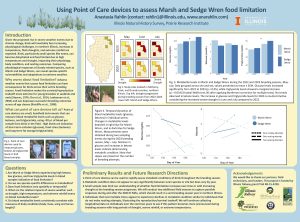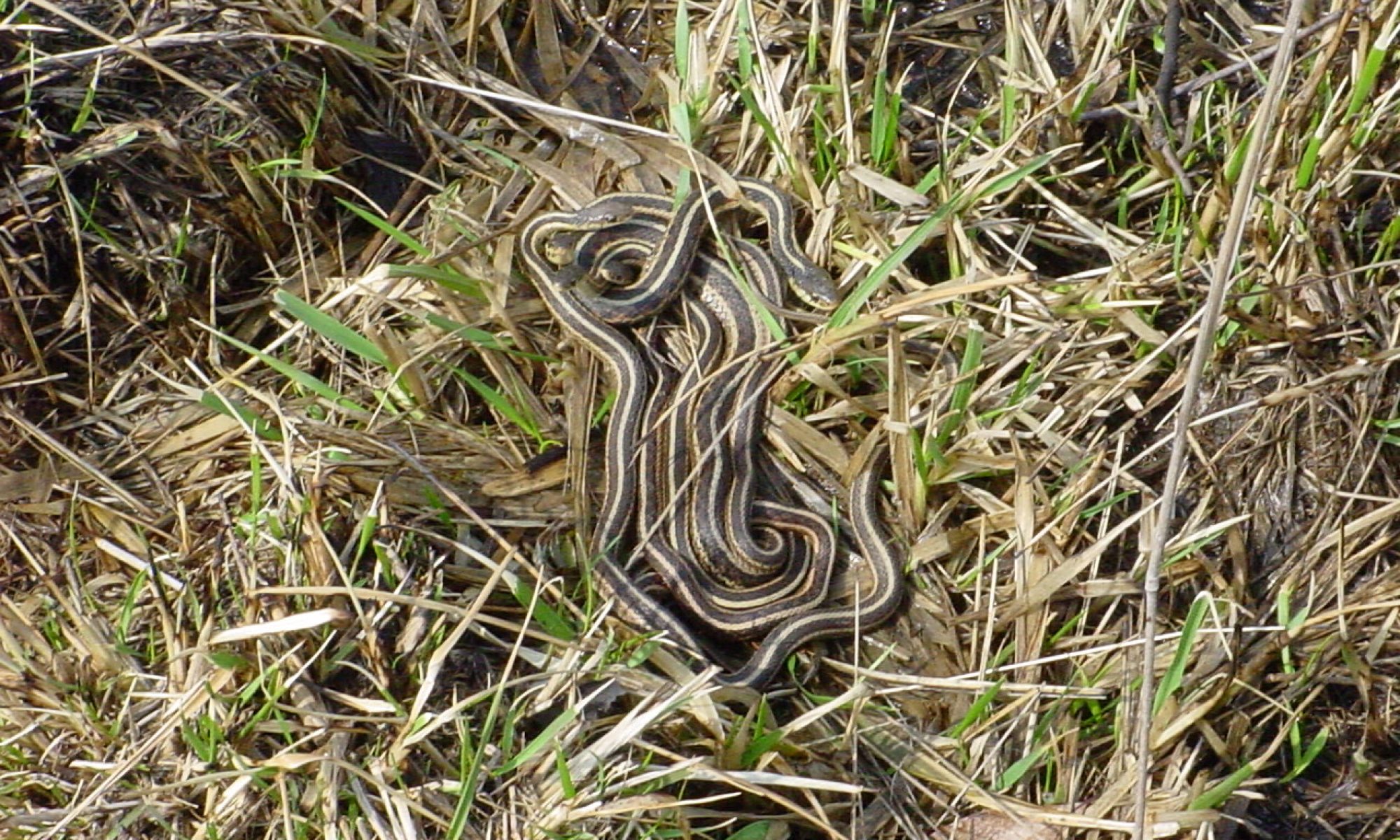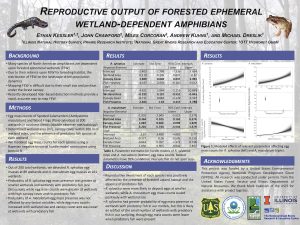Two members of the INHS PaCE Lab presented at The Wildlife Society annual conference November 5-9 in Louisville, KY.
 UBAP program leader and ornithologist Anastasia Rahlin presented a poster “Using Point of Care devices to assess Marsh and Sedge Wren food limitation”
UBAP program leader and ornithologist Anastasia Rahlin presented a poster “Using Point of Care devices to assess Marsh and Sedge Wren food limitation”
Abstract:
Food limitation affects wildlife health and survival, may stem from differences in body condition or habitat quality between sites, and may be exacerbated by extreme weather events. Blood metabolites have previously been used as a food limitation index in birds. To assess changes in blood metabolites in marsh and sedge wrens, we used Point of Care devices to measure blood glucose, ketones, and triglyceride levels as short and long-term food limitation indices. We collected blood samples from wrens in May-August 2022 and 2023 in two Illinois DNR state parks and one dedicated conservation area in the Chicagoland Wilderness region over the duration of the breeding season. Our data indicate short-term food limitation may increase as the breeding season progresses for both Marsh and Sedge Wrens. Ongoing modeling will test whether body condition (age, fat and muscle scores), habitat quality (wetland extent and composition), or extreme weather (drought or flooding) best predicts glucose, ketone, and triglyceride levels over the course of the breeding season. Our findings will provide insights into physiological responses of sedge and marsh wrens to food limitations, and highlight the utility of using POC devices to rapidly measure blood metabolites in the field with minimal impacts to study species. An additional goal of this research is to use blood metabolite data to identify high-quality sites for migratory birds; our data will be used to evaluate the effectiveness of conservation areas at providing high-quality habitat. This work will inform wetland and wet meadow management strategies for migratory birds.
Abstract:
Forested ephemeral wetlands (FEW) support diverse communities of habitat specialist species across the eastern United States, including wetland-breeding amphibians (WBA). Due to their reliance upon FEW for breeding habitat, the location of FEW on the landscape influences population dynamics and distribution of WBA. Generally, FEW are difficult to detect due to their small size and position under the canopy, however, recent technological advances provide the ability to remotely detect FEW with great accuracy. Improved FEW detection methods enable a better understanding of how FEW characteristics and distribution influence WBA presence and abundance. We counted egg masses of two widespread WBA species, Spotted Salamanders and Wood Frogs, at 231 FEW on public lands in southern Illinois using a double observer methodology from 2020–2023. We then used local and landscape characteristics to predict egg mass abundance for each species. We found egg mass counts were highly correlated between observers for each species, but the presence and abundance of egg masses were not highly correlated between the two species. For Spotted Salamanders, we found a positive effect of wetland size on egg mass abundance but found no effect of canopy cover within a 200 m buffer. Conversely, for Wood Frogs we found no effect of wetland size, but egg mass abundance was positively associated with canopy cover within 200 m of FEW. Results from this study will provide a foundation for the estimation of WBA across broad geographic scales using discrete maps of FEW.

